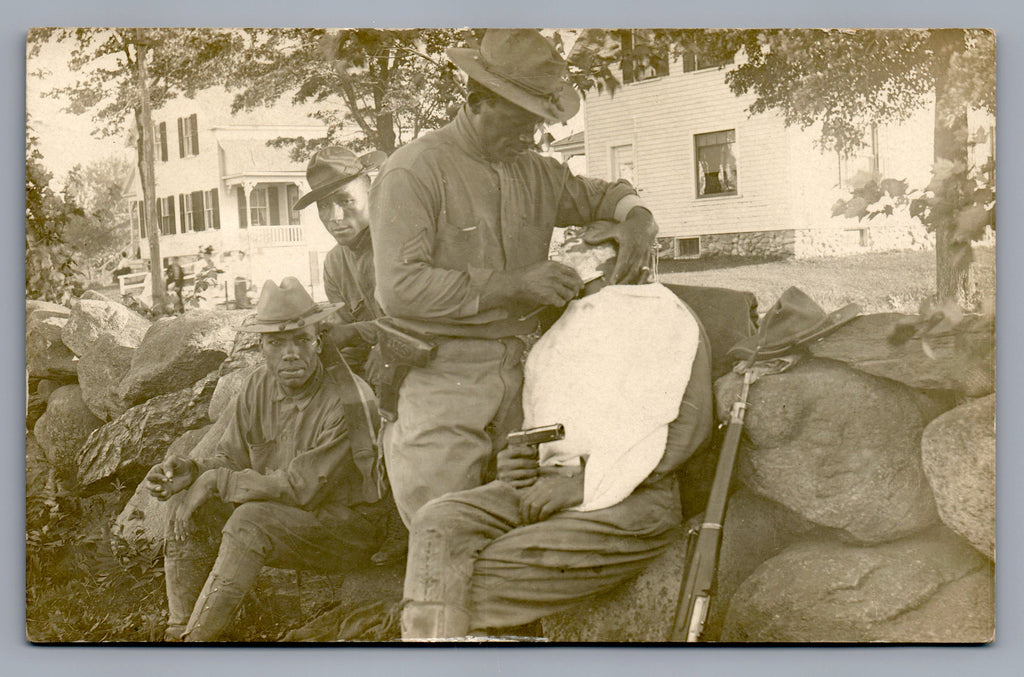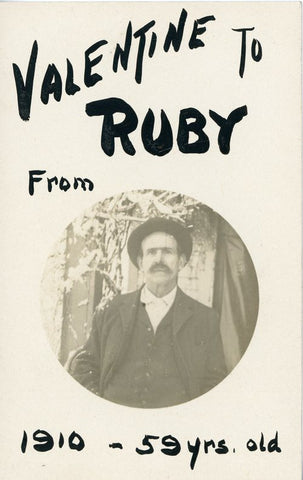Buffalo Soldiers
Not many postcard images are suited for the current moment. Scenes of African-American life generally weren't deemed worthy of documenting in postal print for most of the 20th century.

It captures a mixture of quotidien life (army buddies passing time together, getting a straight razor shave) and somewhat subversive black power. Yet it also has the bittersweet and uniquely American overprint of a people enlisted to fight - to build, to serve, to deliver groceries in a pandemic, or any of the things that have disproportionately been demanded of black citizens - for a country that needs them and has been, in fact, built on their backs, but has used them as fodder, as disposable, as second-class citizens or worse. Their faces are proud yet unmistakably weary.
Change is often painful. But not so painful as resigning ourselves to a status quo that is so far beneath our purported ideals. I'm thankful for all the damn hard work that so many have put in and continue to put in on the long and arduous journey towards equality for black citizens of this country. Keep up the fight.














